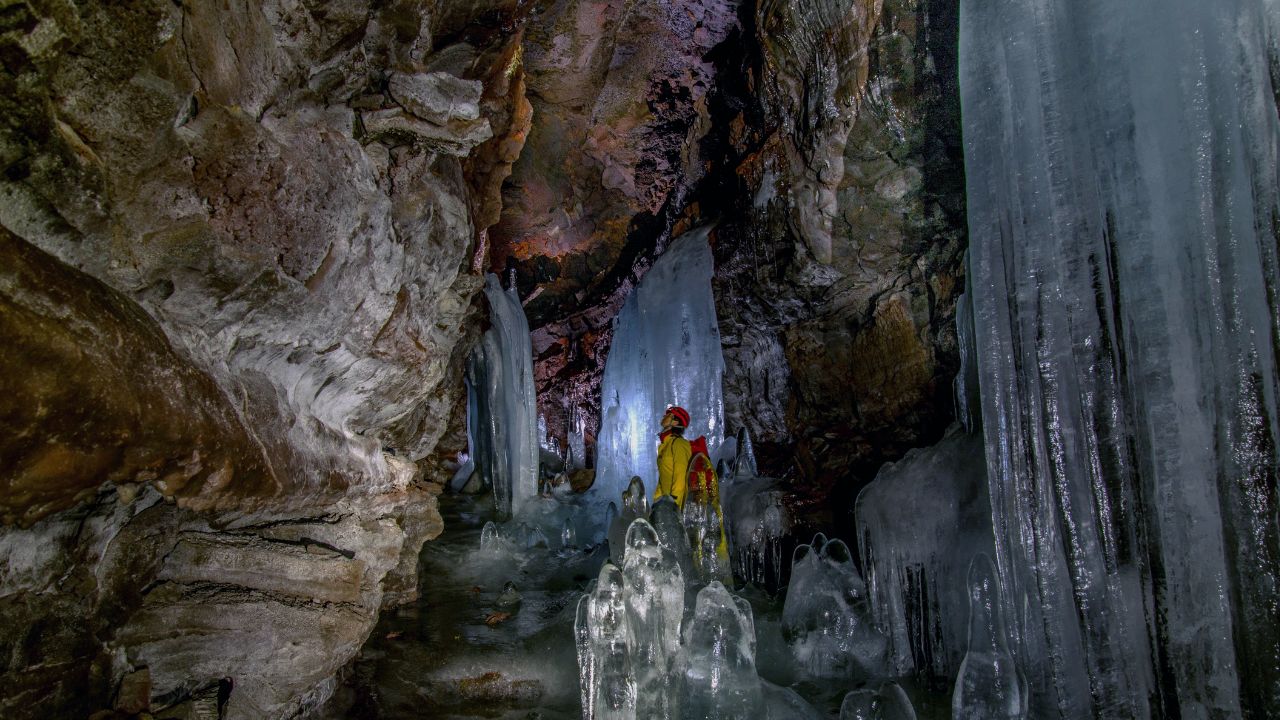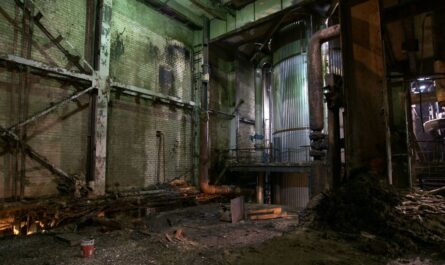BOISE, Idaho — Idaho is famed for its rugged beauty, volcanic landscapes, and thrilling outdoor experiences, but one site in particular has earned an unsettling place among the most dangerous tourist attractions in the country.
The Crystal Ice Cave, a fascinating geological wonder located near the Kings Bowl volcanic formation in southern Idaho, once drew curious travelers from across the nation. Today, however, its gates remain closed — permanently — due to serious safety risks.
According to a detailed report from The Wrangler, the cave’s story serves as a stark reminder of how nature’s beauty can also conceal hidden hazards.
The Crystal Ice Cave: A Rare Geological Marvel
Discovered in the 1960s by miner Jim Papadakis, the Crystal Ice Cave is unlike typical lava tubes found in the region. Instead, it is a volcanic fissure where ice persists year-round, forming spectacular frozen structures inside the basalt rock. Visitors who once ventured inside were greeted by towering icicles, shimmering ice walls, and an otherworldly chill — even in the height of summer.
The cave’s unique airflow system kept temperatures low enough to preserve its icy interior. Guided tours in its early days offered a rare glimpse into this frozen world, accessed via narrow passages and steep descents. For many, it was an unforgettable, if somewhat nerve-wracking, experience.
Why the Crystal Ice Cave Became One of the Most Dangerous
Despite its natural splendor, the Crystal Ice Cave posed numerous risks. Inside, visitors faced slippery, ice-covered surfaces and abrupt drop-offs hidden beneath thin layers of snow or ice. Certain areas had false floors that could give way unexpectedly, plunging explorers into dangerous crevices.
Structural instability was another major concern. Over the decades, sections of the cave deteriorated, with rockfalls posing serious threats to safety. Mold and poor ventilation added to the hazards, making the environment unsuitable for prolonged human presence.
By the early 2000s, the Bureau of Land Management (BLM), which oversees the area, deemed it too risky for public access. Commercial tours were halted, and the cave was officially closed to protect would-be explorers from potentially fatal accidents.
Other Hazardous Destinations in Idaho
While the Crystal Ice Cave is perhaps the most infamous, Idaho is home to other locations that combine allure with danger.
- Perrine Bridge, Twin Falls — This iconic structure is a hotspot for BASE jumping, but its height and strong winds have led to numerous accidents over the years.
- Blue Lakes Boulevard — Known for high traffic and accident rates, it poses risks for both pedestrians and drivers.
- Yellowstone National Park (Idaho section) — The park’s geothermal areas and rugged backcountry are breathtaking but can be perilous. Scalding geysers, unstable ground, and steep trails have all contributed to serious injuries and fatalities.
These destinations highlight the importance of respecting both man-made and natural hazards when traveling through the state.
Read Also: 10 Charming Small Towns in Oregon That Tourists Often Overlook
Safety Tips for Exploring Idaho’s Rugged Attractions
Idaho’s untamed landscapes offer unmatched adventure, but preparation is essential to ensure a safe visit:
- Follow Official Guidelines: Adhere to BLM, National Park Service, or local government safety advisories.
- Use Proper Gear: Wear sturdy footwear, bring lighting equipment for caves, and dress appropriately for sudden weather changes.
- Stay on Marked Trails: Venturing off designated paths can lead to unstable terrain or hidden hazards.
- Avoid Restricted Areas: Locations like the Crystal Ice Cave are closed for a reason — attempting entry could be life-threatening.
- Travel with Others: Solo exploration in remote areas increases risk; a companion can provide help in emergencies.
Balancing Adventure with Safety
Idaho’s natural wonders, from volcanic landscapes to icy caves, provide unforgettable experiences for outdoor enthusiasts. However, the permanent closure of the Crystal Ice Cave serves as a cautionary tale: even the most beautiful destinations can harbor hidden dangers.
For those eager to explore the Gem State’s wild side, a mix of curiosity, preparation, and respect for nature is the key to turning an adventure into a lasting memory rather than a tragic statistic.
Have you ever visited a tourist spot that turned out to be riskier than you expected? Share your story in the comments at ibwhsmag.com.


 by
by 

